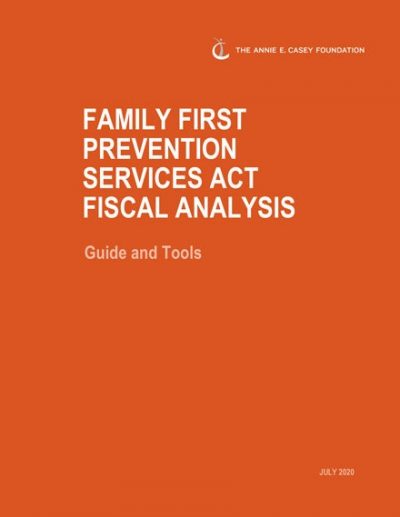The Big Picture
The Fiscal Analysis Tools are two Excel workbooks and two sample workbooks that help leaders analyze the fiscal impact of implementing Family First prevention services.

This resource is designed to help state and local child welfare leaders maximize opportunities — newly available through the federal Family First Prevention Services Act — aimed at preventing children from entering foster care.
Leaders can use the guide and supporting fiscal analysis tools to explore key decisions related to implementing Family First prevention services and also estimate costs, revenues and potential savings associated with these services.
Passed by Congress in 2018, Family First made important changes to child welfare policy and financing, including giving states the option of drawing down federal IV-E foster care funds for prevention services to help kids at imminent risk of entering care.
Unlike Title IV-E program funds, children and families receiving prevention services do not have to meet income eligibility standards under Family First. The law also mandates standards of evidence that prevention programs must meet to be federally reimbursable.
Family First’s investment of IV-E funding in prevention is intended to reduce the number of children and youth coming into foster care. As a result, state and local child welfare leaders should see savings on foster care placements and related administrative expenditures over time.